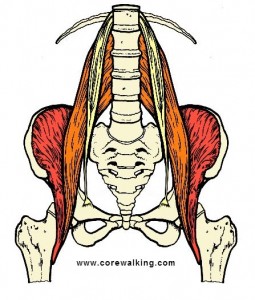 Psoas pain can take a lot of different forms and finding treatment for it is often mysterious and elusive. I can’t tell you the number of clients who come my way after suffering years of pain without anyone telling them exactly what is wrong with their body.
Psoas pain can take a lot of different forms and finding treatment for it is often mysterious and elusive. I can’t tell you the number of clients who come my way after suffering years of pain without anyone telling them exactly what is wrong with their body.
Treatment for pain that is not identifiable in ordinary measures is not going to be easy to find through traditional means. Psoas pain is often limited to the lower back. But just as often it manifests in a wrapping pain from the groin to the top of the pelvis and back. Sometimes it shows as groin pain and sometimes as outer hip discomfort. Psoas pain is occasionally stable and localized but just as often it hurts in one place in the morning and shifts to another area in the afternoon.
Many people who suffer from psoas pain go to doctors who send them for x-rays and MRI’s only to be told that there is nothing wrong as far as the machines can see.
People referred to physical therapy for the treatment of psoas pain, even if correctly diagnosed, are often given a standard protocol of stretches that in my mind don’t often do much to get to the heart of the problem. Psoas stretches are great but they aren’t often the answer for psoas related pain.
Treatment for Psoas Pain
Treatment for psoas pain falls into two categories for me—releasing the psoas, and learning to walk correctly as a means to change long held movement patterns that either led to the problem or exacerbated it.
Stretching the psoas has it place only after successfully releasing it. There are a whole host of psoas releases that I work with though it is a good bet to start with Constructive Rest Position which I have written about on numerous occasions.
The psoas is the main muscle of walking so spending time learning how to walk correctly—and I meet very few people who walk correctly– is the best treatment for psoas pain. Walking with a psoas that is employed successfully along with the right release exercises can go a long way to alleviating all sorts of lower back, hip, groin and knee pain.
